My homemade lime curd recipe is quick and easy to make, and a bright addition to your brunch or dessert spread. Try it as tarts, on biscuits, or on cheesecake!
Originally published October 13, 2021, Updated on 4/18/2023
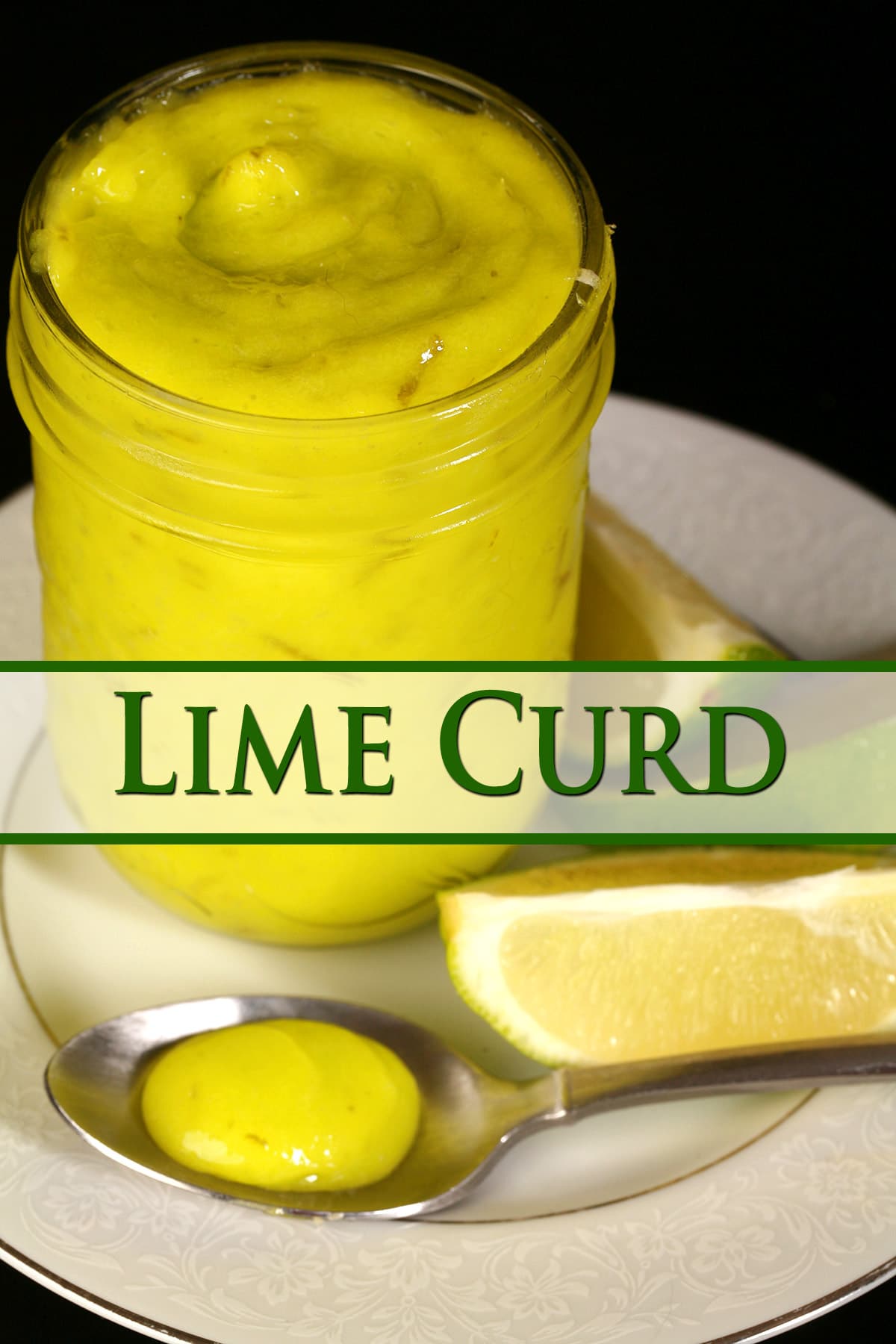
Enter: Lime curd!
Lime curd is just as easy to make as a traditional lemon curd recipe, it just turns out with a bit of a different flavour profile.
With lime as the star of the show, it’s a lot like key lime pie filling.
Because limes are the citrus fruits closest to lemons in terms of acidity, the process of making this easy lime curd recipe is very similar to making the lemon version:
You’re just swapping the fruit juice - lime juice instead of lemon juice - and the citrus zest (lime zest instead of lemon zest - shocking, right?)
Some of my other fruit curd recipes require completely different handling of the fruit (purees, straining, etc), and some of my citrus curd recipes need an extra ingredient (small amounts of citric acid) to help it set up thick.
While this homemade fruit curd is super easy to make, there are a few things you'll need to know about ingredients, equipment, and technique... so let's get to it!

Uses for Lime Curd
Beyond a “just eat it with a spoon, straight from the jar”, there are many, many different uses for fresh lime curd!
Here are a few recipe ideas for you:
- On the breakfast table, or as part of an afternoon tea spread. Spread it on toast, Biscuits, fresh scones, etc. Spoon it over waffles or pancakes (especially good when topped with berries!)
- As a perfect filling for baked goods. Fill Macarons, Cream Puffs or Profiteroles, pre-baked tart shells with lime curd, or spread it between layers of cake*.
- Lime curd is also a great option for Butterfly Cupcakes, either instead of or in addition to frosting. When “in addition to”, I’ll spoon some curd in the cavity, then pipe frosting over it.
Alternately, it’s great as an offering on a Pavlova Dessert Board - it’s the perfect way to bring a pop of bright colour to the spread!
- Spoon some delicious lime curd over ice cream, Cheesecake, or crepes.
- We like to drizzle some creamy curd over yogurt that’s been topped with my Porter’s Yogurt and Ice Cream Topping.
- You can also make layered parfaits with curd and yogurt, or curd and cottage cheese.
* When filling layered cakes with curd, it’s best to pipe a ring of frosting around the outer perimeter of the layer being filled, then fill the inside of that border with the curd.
This is the best way to give some stability to the cake filling layer, and will prevent the lime curd filling from oozing out.
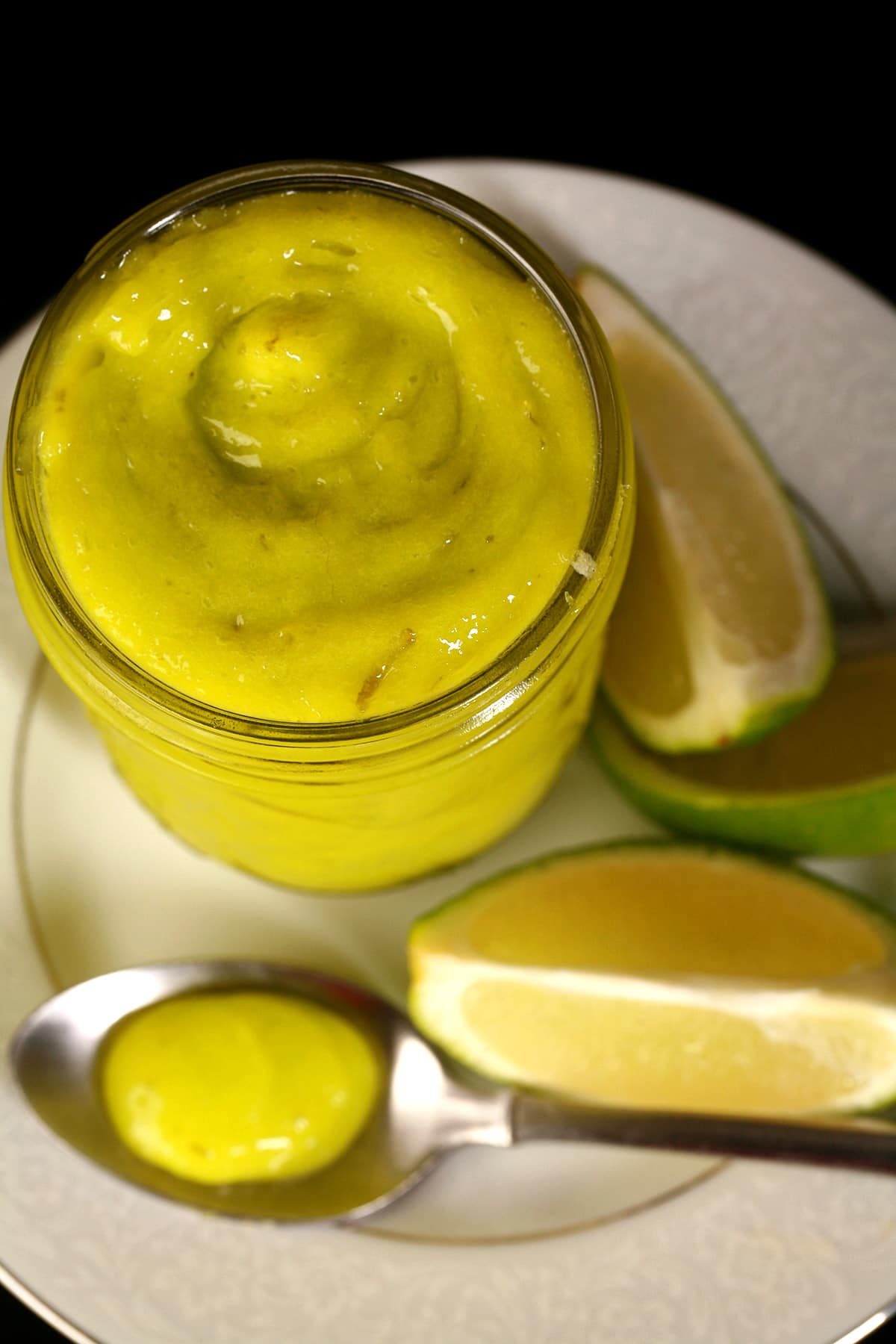
Tips for Making Lime Curd
Lime Curd Ingredients
This recipe uses only a handful of ingredients. They’re all simple ingredients, that are easy to find in any grocery store: Lime juice/zest, sugar, eggs, and unsalted butter.
A few notes:
1. Be sure to use real limes, not bottled lime juice. It really does not turn out as well when using bottled, fresh lime juice is much better!
In terms of which fresh limes to use, I just use regular limes. If you want to make this as a key lime curd recipe, just use key limes.
As a note, key limes are small - and don’t have as much juice as regular limes - so you’ll need more of them, to get enough key lime zest & key lime juice for the recipe. They’re also harder to zest than regular / Persian limes, in my experience.
2. Use basic white granulated sugar for the best taste.
I use only use egg yolks, rather than whole eggs - I find the texture better with just the yolks. I also find that this prevents the curd from having an eggy flavor.
As far as the leftover egg whites go, I like to use them to make Swiss Meringue Buttercream, Meringue Cookies or Pavlova.
4. Optionally, you may want some food colouring on hand. Lime curd turns out quite yellow - I like to add a little lime green food coloring, to differentiate it from my Lemon Curd.
I feel like lime curd should be a green color, YMMV.

Lime Curd Equipment
You don’t need a ton of equipment to make curd, but each piece you do need is important. Here’s the rundown:
A Zester
First off, you want some way to get the zest off the lime.
When I photographed this, I was using a little zesting plane that I’ve had forever, and it works well. No idea where I got it or what brand it is, though.
Since then, I treated myself to a Kitchenaid Box Grater, and I LOVE it.
If you’re in the place I was - with a 10+ year old basic metal grater that was caving in on itself, didn’t do a great (grate? LOL) job, and was literally being held together with an epoxy job*, seriously... treat yourself to a really good grater.
I had no idea what a difference it would make!
* Ok maybe even if yours isn’t being held together with an ugly epoxy job. Don’t let things get as bad as I did, before deciding it was time to replace. Life is too short!
A Juicer
Next, you need a good way to get the juice out, I prefer using small, citrus-specific juicers for this, rather than the big contraption we have for juicing everything else.
I have a Cuisinart Pulp Control Citrus Juicer, love it, no complaints at all.
There are also the Manual citrus juicers, or the Squeeze-type citrus juicers.
Go with whichever you prefer, just get the juice and avoid the seeds!
Mini Food Processor OR Fine Mesh Sieve
You’ll want one or the other - more on that in a bit!
Heavy Bottomed Pot OR Double Boiler
Personally, I prefer using a heavy bottomed pot, but a double boiler is the traditional way to do this... more on that in a bit!
A Silicone Whisk
Yes, stainless steel whisks are great in general... but they can react with the acid in your lime curd, and leave a metallic taste in your curd.
I like to avoid that whole thing, and just use a silicone whisk. (This is also why I prefer to use a glass mixing bowl, rather than a metal bowl).
When making curd, I use the smallest whisk in my Set of 3 Silicone Whisks.
I just find that the smaller one is best to keep everything moving, and prevent clumps.
That said, any brand of silicone whisk should do just fine.
A Thermometer
For both proper thickening AND food safety reasons, I like to use a thermometer when making fruit curds.
You can use any thermometer that will accurate read a temperature of 165 F.
Personally, I like to use a Infrared Cooking Thermometer. It's quick, easy, and no-mess!

Cooking Technique
While you’re “supposed” to cook this over a double boiler - and I did in the photos - I’ll be honest... I never do.
Ever since the first time I made lime curd (which took WAY too long for my patience levels!), I like to cook my lime curd over low, direct heat (medium-low heat, usually). I whisk it constantly, and it’s ready in just minutes - so much less fussy.
If you’re not cooking it over higher heat and you keep an eye on it / keep whisking, you’re not going to end up with clumps.
I like to use a heavy bottomed pot, for the best heat distribution.
You’ll find that when you start out, there will be a lot of foaming. As you approach the right temperature, that foaming will subside - that’s when you should really start keeping an eye on the temperature, to avoid overcooking it.
Finally, just know that the curd will thicken more as it cools, so don’t be so worried if it’s not as thick as you’d like.
If you followed the recipe, did the spoon trick (more on that later), and your curd reached 165F, it’ll thicken!

To Strain or Not to Strain
Traditionally, lime zest is used in the cooking process, then strained out afterwards for a perfectly smooth lime curd.
Personally, I prefer the method I demonstrate here, as well as in my posts for other citrus curds:
I run the zest through my Mini Food Processor, along with the sugar. (A regular blender would also work).
This breaks up the zest to bits that are so fine, they’re basically undetectable in the curd.
Not only is this less fussy, I find it tastes better.
That said, you can always zest the lime and not strain at all - the curd just won’t have quite as smooth texture. Sometimes this is a fun option - I think it’s got some ~ character ~!
This time around, I went for a bit of a rough chop, though, so it's a little bit of texture, but mostly disappeared into the curd.
Or, if you want smooth and traditional, just press your cooked curd through a Fine Mesh Wire Strainer, before adding the butter.

How Long Does Lime Curd Last?
Depending on who you ask, the “shelf life” of homemade lime curd is a month or two in the fridge. (ALWAYS refrigerate your curd, it is unsafe to store it at room temperature!)
Personally, I find it’s best to use it up within a couple of weeks, for the best flavour.
Keep it in an airtight container. If that container has a lot of head space, I like to place some plastic wrap right on the surface of the curd, to prevent it from forming a skin from air exposure.
Can I Freeze Lime Curd?
Yes! It’ll keep for about 6 months in the freezer, and you can freeze it right in a canning jar. (I always keep old jam jars around to use as freezer containers for liquids and semi-liquids!)
Freeze your curd as fresh as possible - ie, don’t wait til it’s about to go bad.
When you want to use it, let it defrost in the fridge for a day or two before use.
Once the lime curd is thawed, you’ll want to use it within a week or two.

How to Make Lime Curd
The full recipe follows - in the printable recipe card at the bottom of this post - , but here is a pictorial overview:
Zest the limes.

Note: See earlier in this post for details on skipping this step.

Juice your limes, measuring out ⅓ cup of the juice.

In a small pot, whisk together egg yolks, large egg, and lime sugar until well combined.
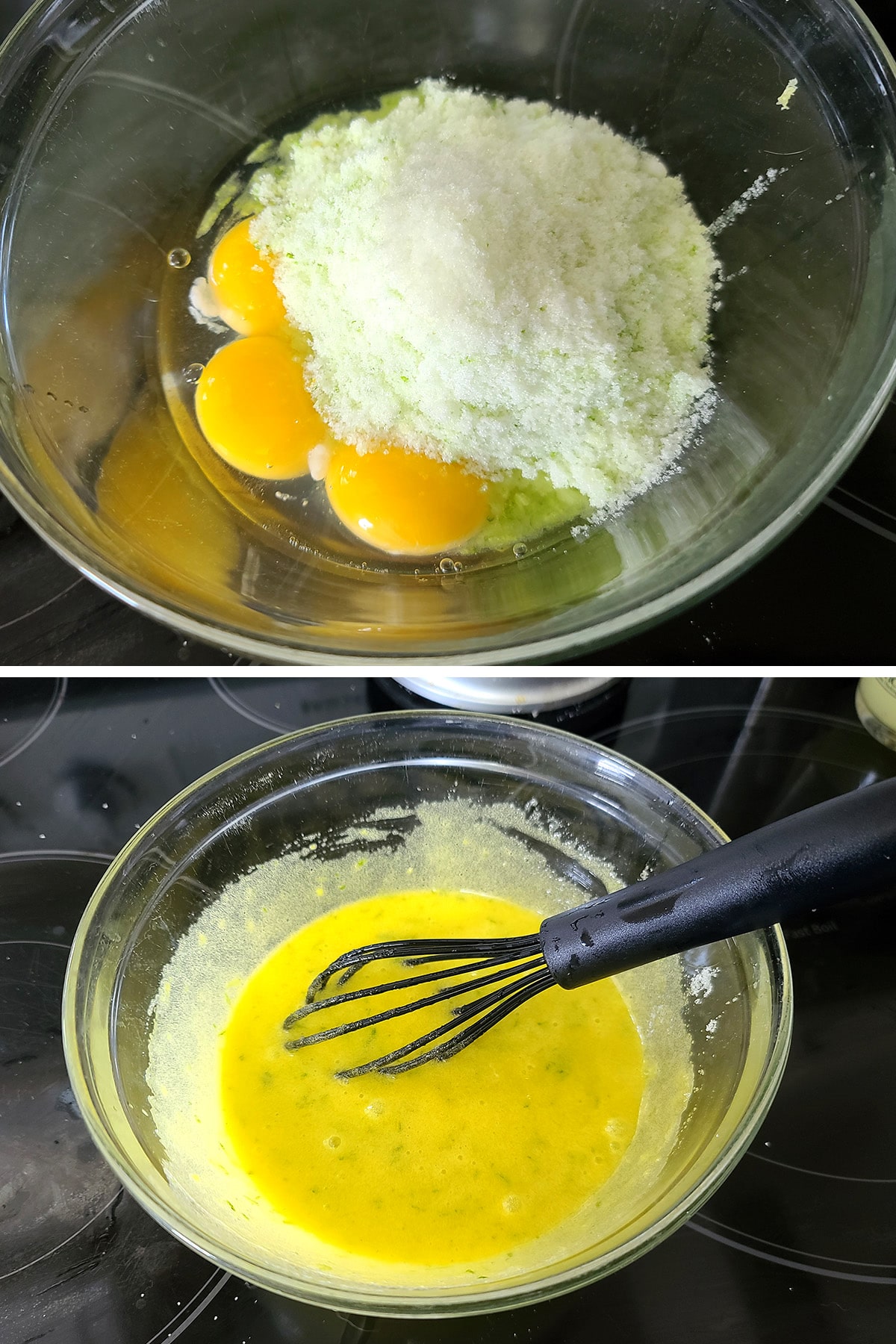
Add the ⅓ cup of juice to the egg mixture, whisk until well combined.

Cook this lime mixture over medium heat (or lower), whisking constantly, until mixture thickens.
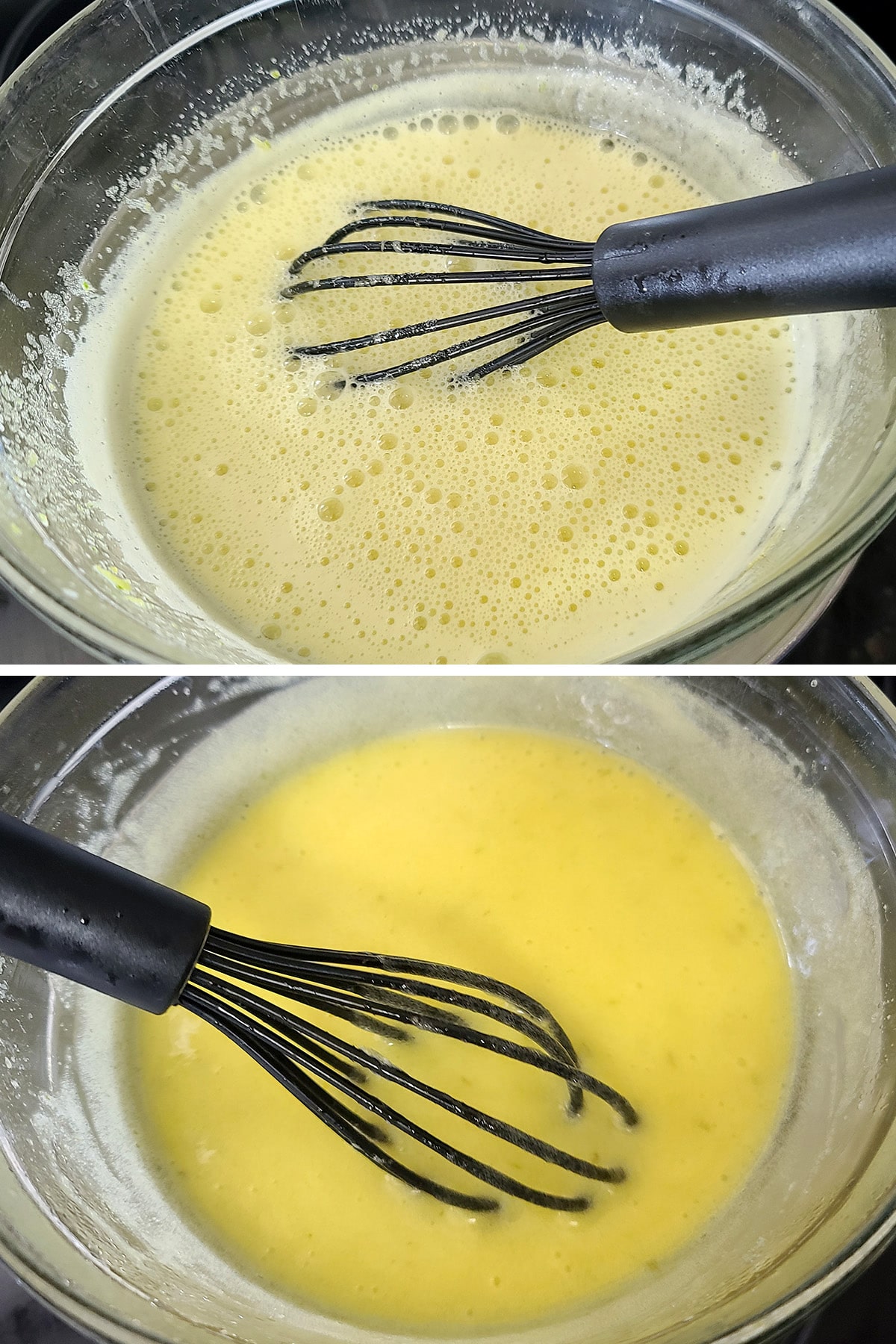
Ideally, you want the mixture to reach 165F - I use a surface thermometer for this.

Once mixture is thick/hot enough, transfer to a heat proof bowl. Add the pieces of butter, whisking until well incorporated.
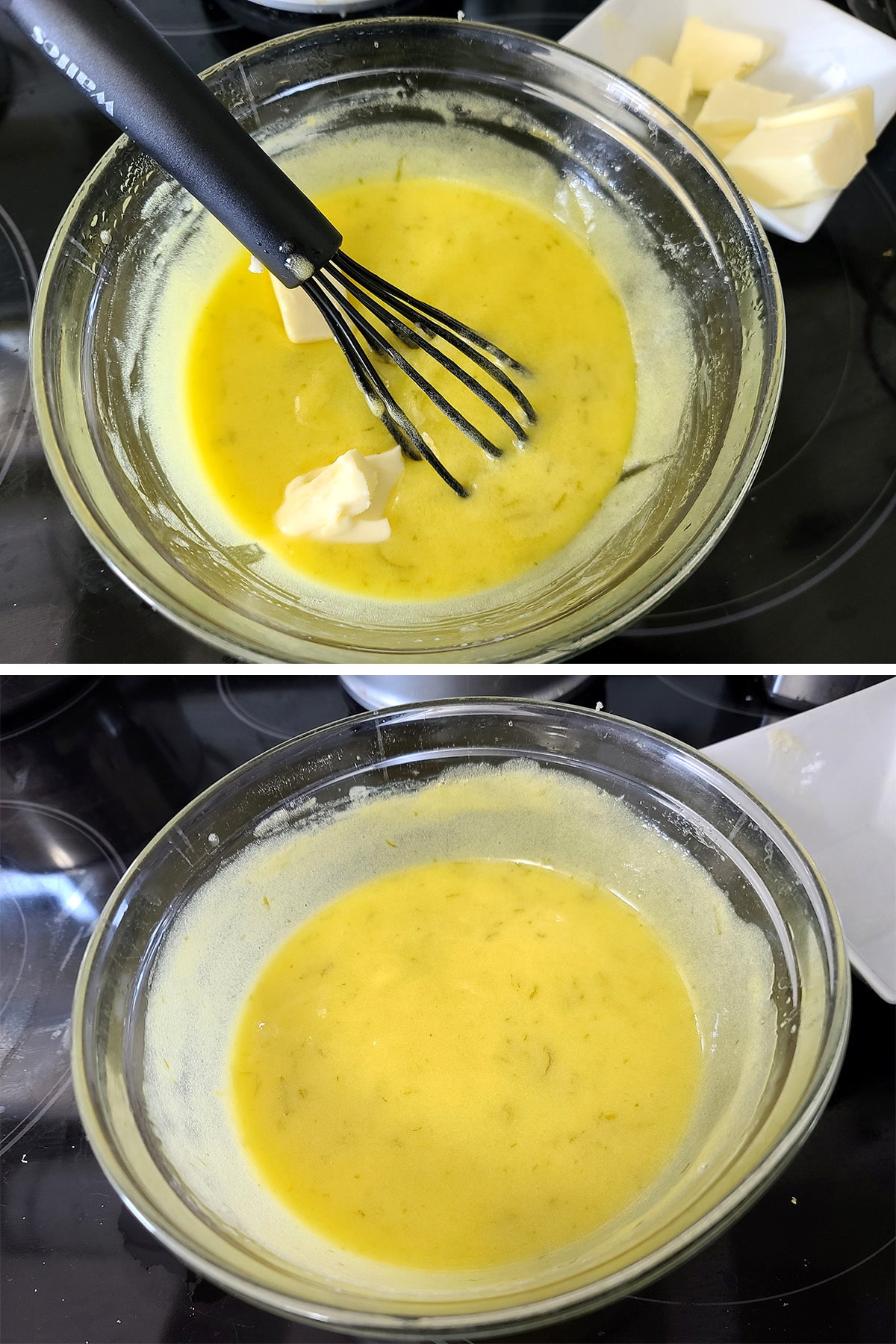
Once all of the butter has melted in and been fully incorporated into the curd, tint green with food colouring, if desired.

Transfer lime curd to your storage container and chill for at least 1 hour before use.

More Fruit Curd Recipes
Looking for more fun fruit curd recipes to dress up your breakfasts, brunches, or desserts? I've got you covered!
Blackcurrant Curd
Blueberry Curd
Cranberry Curd
Grape Curd
Grapefruit Curd
Kiwi Curd
Lemon Curd
Low Carb Lemon Curd
Mango Curd
Orange Curd
Passionfruit Curd
Raspberry Curd
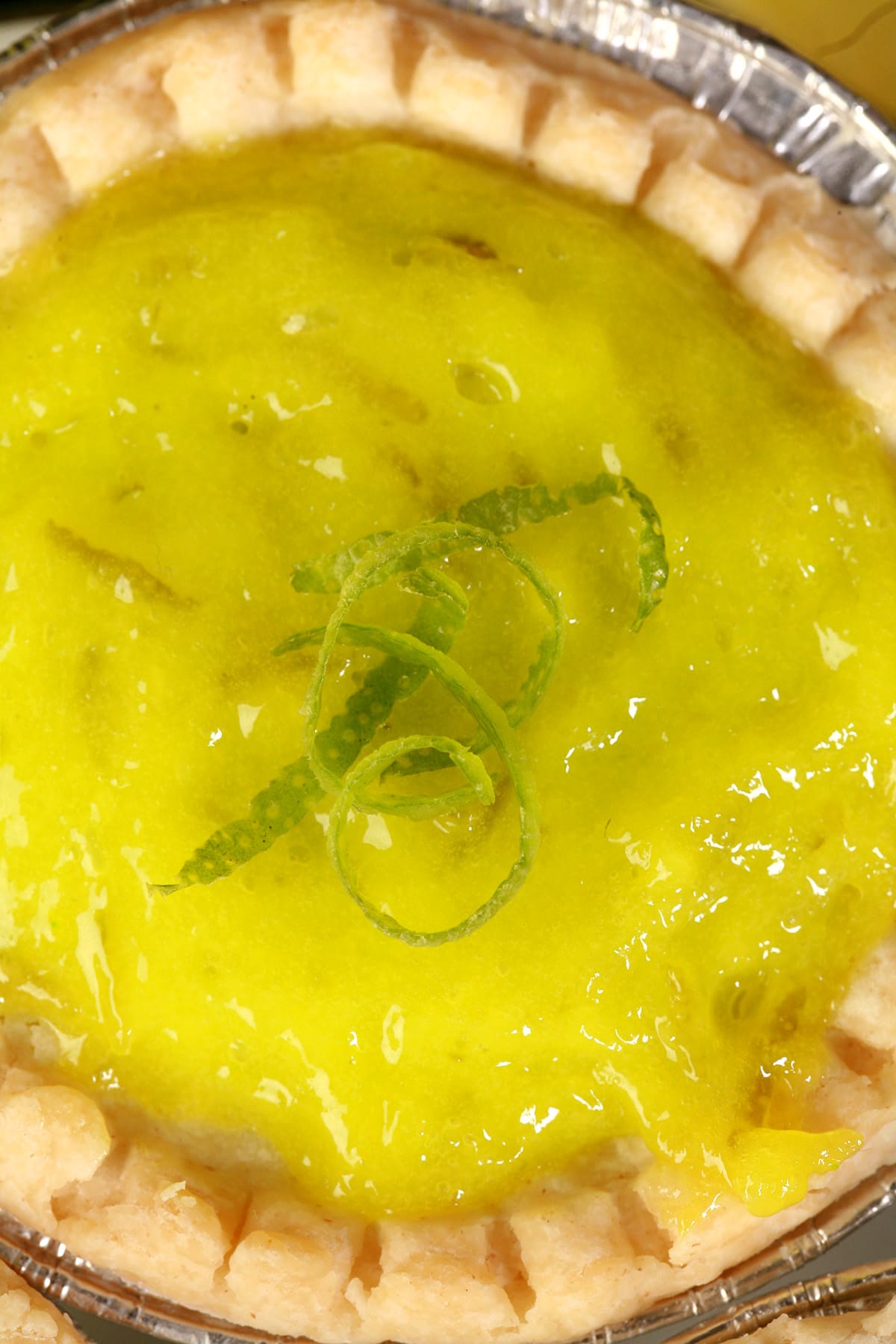
Share the Love!
Before you chow down, be sure to take some pics of your handiwork! If you post it to Bluesky, be sure to tag us - @CelebrationGen. We're also on Pinterest, so you can save all your favourite recipes to a board!
Also, be sure to subscribe to my free monthly email newsletter, so you never miss out on any of my nonsense. Well, the published nonsense, anyway!
Finally, if you love this recipe, please consider leaving a star rating and/or a comment below, and maybe even sharing this post on social media!

Easy, No-Fail Lime Curd Recipe
Equipment
- Zester
- Juicer
- Mini Food Processor
- Silicone Whisk
- Infrared Surface Thermometer
Ingredients
- 3 Limes
- ¾ cup Granulated Sugar
- 3 Large Egg Yolks
- 1 Large Egg
- 6 tablespoon Salted Butter Chilled and cut into pieces.
- Green food colouring Optional
Instructions
- Zest the limes.
- Add the zest and sugar to your mini food processor, blitz until zest is finely chopped and well incorporated in the sugar. Note: See post for details on skipping this step.
- Juice your limes, measuring out ⅓ cup of the juice.
- In a small pot, whisk together egg yolks, large egg, and lime sugar until well combined. Add the ⅓ cup of juice, whisk until well combined.
- Cook over medium heat, whisking constantly, until mixture thickens. It should be able to coat the back of a spoon and retain a clear trail when a finger is dragged across the back of the spoon. Ideally, you want the mixture to reach 165F - I use a surface thermometer for this.
- Once mixture is thick / hot enough, transfer to a bowl. Add the pieces of butter, whisking until well incorporated.
- If you want to strain the curd, press it through a metal strainer at this point.
- Once all of the butter has melted in and been fully incorporated into the curd, tint green with food colouring, if desired.
- Transfer lime curd to your storage container and chill for at least 1 hour before use.







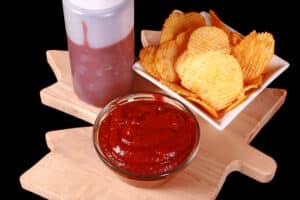



Sandra Everett
i regret the drop of green food coloring because it looked like fake slime. Tasted great, perfect for halloween if you do use food coloring!
Marie Porter
Like I mentioned, I just did it to differentiate it from the others, for the photos.
Scott
Wonderful recipe for lime curd. Used it for making tarts and added a dollop on top of a great key lime pie recipe for an extra flavor dimension. For the reply on food coloring - add another drop to darken it a bit more so it doesn't look like slime. Also, I'm thinking the 165F is a bit too low, my thermometer read around 190-195f when it reached the correct consistency. Thanks for the recipe!